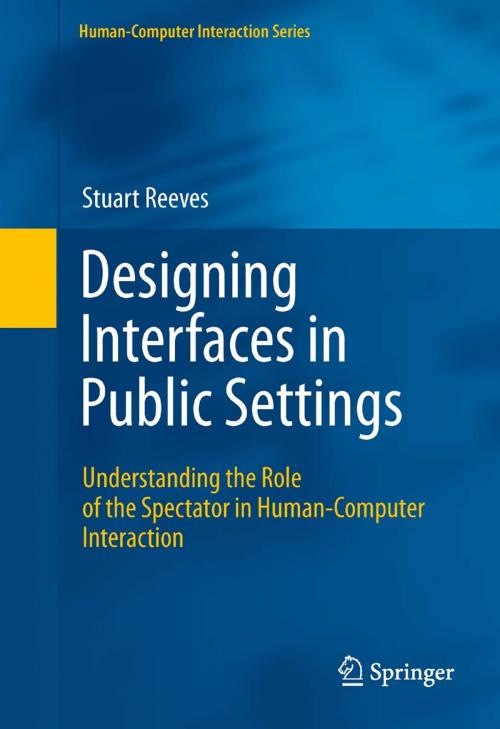Designing Interfaces in Public Settings
Understanding the Role of the Spectator in Human-Computer Interaction
Nonfiction, Computers, Advanced Computing, Programming, User Interfaces, Database Management, Data Processing, General Computing| Author: | Stuart Reeves | ISBN: | 9780857292650 |
| Publisher: | Springer London | Publication: | January 4, 2011 |
| Imprint: | Springer | Language: | English |
| Author: | Stuart Reeves |
| ISBN: | 9780857292650 |
| Publisher: | Springer London |
| Publication: | January 4, 2011 |
| Imprint: | Springer |
| Language: | English |
Interaction with computers is becoming an increasingly ubiquitous and public affair. With more and more interactive digital systems being deployed in places such as museums, city streets and performance venues, understanding how to design for them is becoming ever more pertinent. Crafting interactions for these public settings raises a host of new challenges for human-computer interaction, widening the focus of design from concern about an individual's dialogue with an interface to also consider the ways in which interaction affects and is affected by spectators and bystanders.
Designing Interfaces in Public Settings takes a performative perspective on interaction, exploring a series of empirical studies of technology at work in public performance environments. From interactive storytelling to mobile devices on city streets, from digital telemetry systems on fairground rides to augmented reality installation interactive, the book documents the design issues emerging from the changing role of technology as it pushes out into our everyday lives.
Building a design framework from these studies and the growing body of literature examining public technologies, this book provides a new perspective for understanding human-computer interaction. Mapping out this new and challenging design space, Designing Interfaces in Public Settings offers both conceptual understandings and practical strategies for interaction design practitioners, artists working with technology, and computer scientists.
Interaction with computers is becoming an increasingly ubiquitous and public affair. With more and more interactive digital systems being deployed in places such as museums, city streets and performance venues, understanding how to design for them is becoming ever more pertinent. Crafting interactions for these public settings raises a host of new challenges for human-computer interaction, widening the focus of design from concern about an individual's dialogue with an interface to also consider the ways in which interaction affects and is affected by spectators and bystanders.
Designing Interfaces in Public Settings takes a performative perspective on interaction, exploring a series of empirical studies of technology at work in public performance environments. From interactive storytelling to mobile devices on city streets, from digital telemetry systems on fairground rides to augmented reality installation interactive, the book documents the design issues emerging from the changing role of technology as it pushes out into our everyday lives.
Building a design framework from these studies and the growing body of literature examining public technologies, this book provides a new perspective for understanding human-computer interaction. Mapping out this new and challenging design space, Designing Interfaces in Public Settings offers both conceptual understandings and practical strategies for interaction design practitioners, artists working with technology, and computer scientists.















